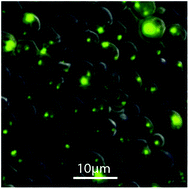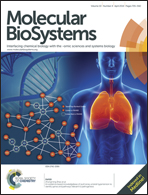A proteomic survey of widespread protein aggregation in yeast†
Abstract
Many normally cytosolic yeast proteins form insoluble intracellular bodies in response to nutrient depletion, suggesting the potential for widespread protein aggregation in stressed cells. Nearly 200 such bodies have been found in yeast by screening libraries of fluorescently tagged proteins. In order to more broadly characterize the formation of these bodies in response to stress, we employed a proteome-wide shotgun mass spectrometry assay in order to measure shifts in the intracellular solubilities of endogenous proteins following heat stress. As quantified by mass spectrometry, heat stress tended to shift the same proteins into insoluble form as did nutrient depletion; many of these proteins were also known to form foci in response to arsenic stress. Affinity purification of several foci-forming proteins showed enrichment for co-purifying chaperones, including Hsp90 chaperones. Tests of induction conditions and co-localization of metabolic enzymes participating in the same metabolic pathways suggested those foci did not correspond to multi-enzyme organizing centers. Thus, in yeast, the formation of stress bodies appears common across diverse, normally diffuse cytoplasmic proteins and is induced by multiple types of cell stress, including thermal, chemical, and nutrient stress.


 Please wait while we load your content...
Please wait while we load your content...